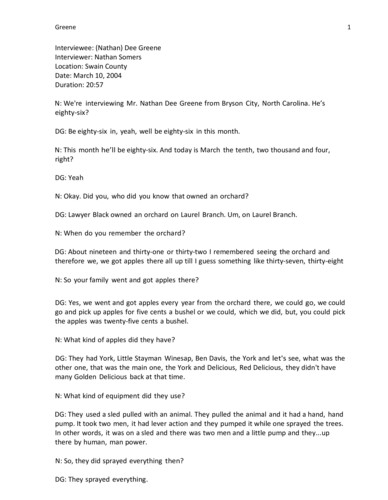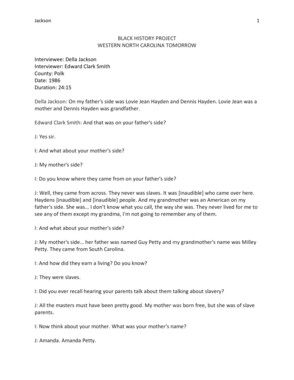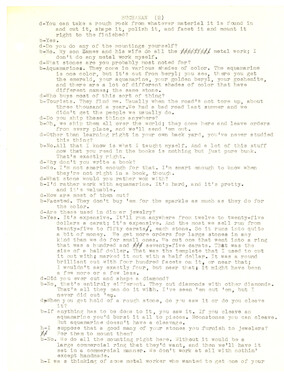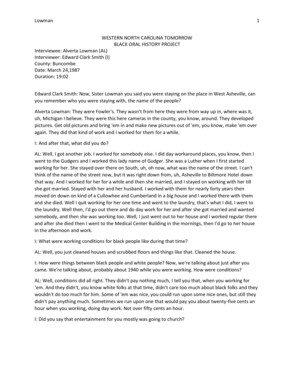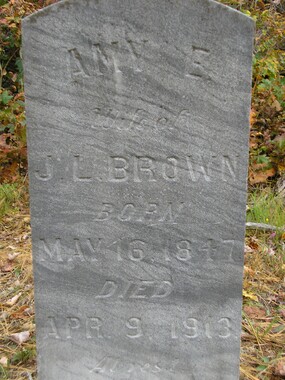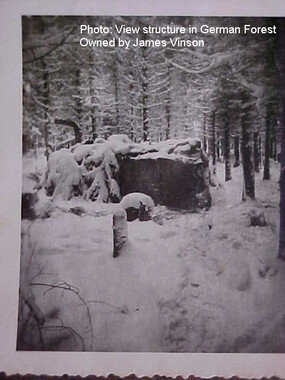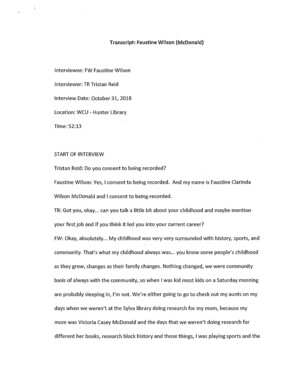Western Carolina University (20)
View all
- Canton Champion Fibre Company (2308)
- Cherokee Traditions (291)
- Civil War in Southern Appalachia (165)
- Craft Revival (1942)
- Great Smoky Mountains - A Park for America (2946)
- Highlights from Western Carolina University (430)
- Horace Kephart (941)
- Journeys Through Jackson (159)
- LGBTQIA+ Archive of Jackson County (85)
- Oral Histories of Western North Carolina (314)
- Picturing Appalachia (6873)
- Stories of Mountain Folk (413)
- Travel Western North Carolina (160)
- Western Carolina University Fine Art Museum Vitreograph Collection (129)
- Western Carolina University Herbarium (92)
- Western Carolina University: Making Memories (738)
- Western Carolina University Publications (2491)
- Western Carolina University Restricted Electronic Theses and Dissertations (146)
- Western North Carolina Regional Maps (71)
- World War II in Southern Appalachia (131)
University of North Carolina Asheville (6)
View all
- Allanstand Cottage Industries (62)
- Appalachian National Park Association (53)
- Bennett, Kelly, 1890-1974 (1463)
- Berry, Walter (76)
- Brasstown Carvers (40)
- Carver, George Washington, 1864?-1943 (26)
- Cathey, Joseph, 1803-1874 (1)
- Champion Fibre Company (233)
- Champion Paper and Fibre Company (297)
- Cherokee Indian Fair Association (16)
- Cherokee Language Program (22)
- Crowe, Amanda (40)
- Edmonston, Thomas Benton, 1842-1907 (7)
- Ensley, A. L. (Abraham Lincoln), 1865-1948 (275)
- Fromer, Irving Rhodes, 1913-1994 (70)
- George Butz (BFS 1907) (46)
- Goodrich, Frances Louisa (120)
- Grant, George Alexander, 1891-1964 (96)
- Heard, Marian Gladys (60)
- Kephart, Calvin, 1883-1969 (15)
- Kephart, Horace, 1862-1931 (313)
- Kephart, Laura, 1862-1954 (39)
- Laney, Gideon Thomas, 1889-1976 (439)
- Masa, George, 1881-1933 (61)
- McElhinney, William Julian, 1896-1953 (44)
- Niggli, Josephina, 1910-1983 (10)
- North Carolina Park Commission (105)
- Osborne, Kezia Stradley (9)
- Owens, Samuel Robert, 1918-1995 (11)
- Penland Weavers and Potters (36)
- Roberts, Vivienne (15)
- Roth, Albert, 1890-1974 (142)
- Schenck, Carl Alwin, 1868-1955 (1)
- Sherrill's Photography Studio (2565)
- Southern Highland Handicraft Guild (127)
- Southern Highlanders, Inc. (71)
- Stalcup, Jesse Bryson (46)
- Stearns, I. K. (213)
- Thompson, James Edward, 1880-1976 (226)
- United States. Indian Arts and Crafts Board (130)
- USFS (683)
- Vance, Zebulon Baird, 1830-1894 (1)
- Weaver, Zebulon, 1872-1948 (58)
- Western Carolina College (230)
- Western Carolina Teachers College (282)
- Western Carolina University (2008)
- Western Carolina University. Mountain Heritage Center (18)
- Whitman, Walt, 1819-1892 (10)
- Wilburn, Hiram Coleman, 1880-1967 (73)
- Williams, Isadora (3)
- Cain, Doreyl Ammons (0)
- Crittenden, Lorraine (0)
- Rhodes, Judy (0)
- Smith, Edward Clark (0)
- Appalachian Region, Southern (2569)
- Asheville (N.C.) (1923)
- Avery County (N.C.) (26)
- Blount County (Tenn.) (195)
- Buncombe County (N.C.) (1672)
- Cherokee County (N.C.) (283)
- Clay County (N.C.) (555)
- Graham County (N.C.) (236)
- Great Smoky Mountains National Park (N.C. and Tenn.) (519)
- Haywood County (N.C.) (3569)
- Henderson County (N.C.) (70)
- Jackson County (N.C.) (4912)
- Knox County (Tenn.) (35)
- Knoxville (Tenn.) (13)
- Lake Santeetlah (N.C.) (10)
- Macon County (N.C.) (420)
- Madison County (N.C.) (215)
- McDowell County (N.C.) (39)
- Mitchell County (N.C.) (132)
- Polk County (N.C.) (35)
- Qualla Boundary (982)
- Rutherford County (N.C.) (76)
- Swain County (N.C.) (2182)
- Transylvania County (N.C.) (270)
- Watauga County (N.C.) (12)
- Waynesville (N.C.) (86)
- Yancey County (N.C.) (72)
- Aerial Photographs (3)
- Aerial Views (60)
- Albums (books) (4)
- Articles (1)
- Artifacts (object Genre) (228)
- Bibliographies (1)
- Biography (general Genre) (2)
- Cards (information Artifacts) (38)
- Clippings (information Artifacts) (191)
- Copybooks (instructional Materials) (3)
- Crafts (art Genres) (622)
- Depictions (visual Works) (21)
- Design Drawings (1)
- Drawings (visual Works) (185)
- Envelopes (73)
- Exhibitions (events) (1)
- Facsimiles (reproductions) (1)
- Fiction (general Genre) (4)
- Financial Records (12)
- Fliers (printed Matter) (67)
- Glass Plate Negatives (381)
- Guidebooks (2)
- Internegatives (10)
- Interviews (815)
- Land Surveys (102)
- Letters (correspondence) (1013)
- Manuscripts (documents) (618)
- Maps (documents) (177)
- Memorandums (25)
- Minutes (administrative Records) (59)
- Negatives (photographs) (6090)
- Newsletters (1290)
- Newspapers (2)
- Notebooks (8)
- Occupation Currency (1)
- Paintings (visual Works) (1)
- Pen And Ink Drawings (1)
- Periodicals (193)
- Personal Narratives (10)
- Photographs (12976)
- Plans (maps) (1)
- Poetry (5)
- Portraits (4568)
- Postcards (329)
- Programs (documents) (181)
- Publications (documents) (2443)
- Questionnaires (65)
- Relief Prints (26)
- Sayings (literary Genre) (1)
- Scrapbooks (282)
- Sheet Music (2)
- Slides (photographs) (402)
- Songs (musical Compositions) (2)
- Sound Recordings (796)
- Specimens (92)
- Speeches (documents) (18)
- Tintypes (photographs) (8)
- Transcripts (322)
- Video Recordings (physical Artifacts) (23)
- Text Messages (0)
- A.L. Ensley Collection (275)
- Appalachian Industrial School Records (7)
- Appalachian National Park Association Records (336)
- Axley-Meroney Collection (2)
- Bayard Wootten Photograph Collection (20)
- Bethel Rural Community Organization Collection (7)
- Blumer Collection (5)
- C.W. Slagle Collection (20)
- Canton Area Historical Museum (2110)
- Carlos C. Campbell Collection (462)
- Cataloochee History Project (64)
- Cherokee Studies Collection (4)
- Daisy Dame Photograph Album (5)
- Daniel Boone VI Collection (1)
- Doris Ulmann Photograph Collection (112)
- Elizabeth H. Lasley Collection (1)
- Elizabeth Woolworth Szold Fleharty Collection (4)
- Frank Fry Collection (95)
- George Masa Collection (173)
- Gideon Laney Collection (452)
- Hazel Scarborough Collection (2)
- Hiram C. Wilburn Papers (28)
- Historic Photographs Collection (236)
- Horace Kephart Collection (861)
- Humbard Collection (33)
- Hunter and Weaver Families Collection (1)
- I. D. Blumenthal Collection (4)
- Isadora Williams Collection (4)
- Jesse Bryson Stalcup Collection (47)
- Jim Thompson Collection (224)
- John B. Battle Collection (7)
- John C. Campbell Folk School Records (80)
- John Parris Collection (6)
- Judaculla Rock project (2)
- Kelly Bennett Collection (1482)
- Love Family Papers (11)
- Major Wiley Parris Civil War Letters (3)
- Map Collection (12)
- McFee-Misemer Civil War Letters (34)
- Mountain Heritage Center Collection (4)
- Norburn - Robertson - Thomson Families Collection (44)
- Pauline Hood Collection (7)
- Pre-Guild Collection (2)
- Qualla Arts and Crafts Mutual Collection (12)
- R.A. Romanes Collection (681)
- Rosser H. Taylor Collection (1)
- Samuel Robert Owens Collection (94)
- Sara Madison Collection (144)
- Sherrill Studio Photo Collection (2558)
- Smoky Mountains Hiking Club Collection (616)
- Stories of Mountain Folk - Radio Programs (374)
- The Reporter, Western Carolina University (510)
- Venoy and Elizabeth Reed Collection (16)
- WCU Gender and Sexuality Oral History Project (32)
- WCU Mountain Heritage Center Oral Histories (25)
- WCU Oral History Collection - Mountain People, Mountain Lives (71)
- WCU Students Newspapers Collection (1923)
- Western North Carolina Tomorrow Black Oral History Project (69)
- William Williams Stringfield Collection (2)
- Zebulon Weaver Collection (109)
- African Americans (390)
- Appalachian Trail (35)
- Artisans (521)
- Cherokee art (84)
- Cherokee artists -- North Carolina (10)
- Cherokee language (21)
- Cherokee pottery (101)
- Cherokee women (208)
- Church buildings (189)
- Civilian Conservation Corps (U.S.) (111)
- College student newspapers and periodicals (2012)
- Dams (107)
- Dance (1023)
- Education (222)
- Floods (61)
- Folk music (1015)
- Forced removal, 1813-1903 (2)
- Forest conservation (220)
- Forests and forestry (1184)
- Gender nonconformity (4)
- Great Smoky Mountains National Park (N.C. and Tenn.) (181)
- Hunting (45)
- Landscape photography (25)
- Logging (119)
- Maps (83)
- Mines and mineral resources (8)
- North Carolina -- Maps (18)
- Paper industry (38)
- Postcards (255)
- Pottery (135)
- Railroad trains (72)
- Rural electrification -- North Carolina, Western (3)
- School integration -- Southern States (2)
- Segregation -- North Carolina, Western (5)
- Slavery (5)
- Sports (452)
- Storytelling (243)
- Waterfalls -- Great Smoky Mountains (N.C. and Tenn.) (66)
- Weaving -- Appalachian Region, Southern (280)
- Wood-carving -- Appalachian Region, Southern (328)
- World War, 1939-1945 (173)
Interview with Nathan Dee Greene
Item
Item’s are ‘child’ level descriptions to ‘parent’ objects, (e.g. one page of a whole book).
-
-
Greene 1 Interviewee: (Nathan) Dee Greene Interviewer: Nathan Somers Location: Swain County Date: March 10, 2004 Duration: 20:57 N: We're interviewing Mr. Nathan Dee Greene from Bryson City, North Carolina. He’s eighty-six? DG: Be eighty-six in, yeah, well be eighty-six in this month. N: This month he’ll be eighty-six. And today is March the tenth, two thousand and four, right? DG: Yeah N: Okay. Did you, who did you know that owned an orchard? DG: Lawyer Black owned an orchard on Laurel Branch. Um, on Laurel Branch. N: When do you remember the orchard? DG: About nineteen and thirty-one or thirty-two I remembered seeing the orchard and therefore we, we got apples there all up till I guess something like thirty-seven, thirty-eight N: So your family went and got apples there? DG: Yes, we went and got apples every year from the orchard there, we could go, we could go and pick up apples for five cents a bushel or we could, which we did, but, you could pick the apples was twenty-five cents a bushel. N: What kind of apples did they have? DG: They had York, Little Stayman Winesap, Ben Davis, the York and let's see, what was the other one, that was the main one, the York and Delicious, Red Delicious, they didn't have many Golden Delicious back at that time. N: What kind of equipment did they use? DG: They used a sled pulled with an animal. They pulled the animal and it had a hand, hand pump. It took two men, it had lever action and they pumped it while one sprayed the trees. In other words, it was on a sled and there was two men and a little pump and they...up there by human, man power. N: So, they did sprayed everything then? DG: They sprayed everything. Greene 2 N: What did you, what did y’all use the apples for? DG: We used N: What did you make with them? DG: We used canning, we canned, canned apples, dried fruit mostly back then, we used mostly dried fruit. Therefore, my mother would peel them and slice them up and put them on a sheet and put them out on the, in the sun and they would stay in the sun, and she would gather them in every evening. She'd gather them in before the dew fell or everything, and therefore she'd bring them in and generally took around two to three weeks to dry out apples. N: How many bushels do you think y’all got a year? DG: Well, I couldn't, I had to go over and get them on a sled. A sled pulled, we had a donkey at that time, we pulled, I have brought as high as eight bushels on the sled from the orchard home. Mother would go in, she would go through the day her sister's husband took care of the orchard and for Lawyer Black. She would go in the morning and there and all day there and she'd pick up the apples in a tote bag and I would after school, I would go over and get them and sled them home. At that time the roads in this community was, there was only sled roads; it was very small and very narrow and therefore wagon, it wasn't big enough for a wagon. And you'd use sled back then all the time. N: What was his name, your Aunt's husband? DG: George Howard. N: George Howard. DG: George Howard and he had two boys and one daughter and his boys helped him work in the orchard all the time, for Lawyer Black. Lawyer Black paid them at that time which is, at that time, labor was about twenty-five cents a day, labor was about twenty-five cents a day. N: Did y’all make, did y’all have apples at Christmas time still, did y’all keep them that long? DG: Oh yes, yes, sometimes ours didn't keep, sometimes we'd wrap them in paper and put them in a box and put them in this basement for Christmas and sometimes, we'd, if they'd, sometimes they would keep and sometimes they wouldn't. And so we would go over to Uncle Jordan's and we’d buy a bushel or two for twenty-five cents a bushel for Christmas. And it was mostly Delicious and Winesap at that time. And we'd, and everybody bought apples there for the holidays. N: Y’all didn't make any Apple Brandy or anything like that? Greene 3 DG: We made cider. We had yes, there was, we made a little, made a lot of cider that's a way we had our made our vinegar to can with. We, cider would set up, we and it would ferminate, that's the word, and it would turn to cider and you could keep the ciders for next summer and there you put up the pickles and stuff with this and it would turn to vinegar. N: Was there any special methods or soil that you had to have to grow those types of apples or that you knew about? DG: No, he… N: Certain places in the mountains that you had apples? DG: Well it was yes it was back in a deep, deep cove. A deep cove and it was sort of cool but it was a real rich cove there it was a large orchard that run bout a half mile through, and therefore he had let, he set in rows and therefore they had roads built around by hand, they built the roads by hand, and the sled roads through the orchard, through the orchards, and therefore very rich and dark cove land it was. N: Do you know of any apples that are native just to this area? DG: Well, that was, that was the main apples as native to this area. We don't have any of them now, but my last, which you know fell over there at the chicken house, at the pond, it was one of the old fashioned Yorks. They come in I call it oblong shape, they didn't have no special shape and they would be flat apples and they would make different shape apples but it was one of the best apples there was to make… my mother made a lot of bleach fruit, therefore she would put it in a barrel and therefore she would burn sulfur on them for about three or four days at a time and then she would refill it with sulfur and till it, till her apples bleached out, that, they call it bleach fruit. therefore it, she, it would keep therefore she could put it in the basement, therefore we didn't have no 'frigeration at that time N: She'd pack them in a crock. DG: Yeah, she's pack them in a crock, and that was bleach fruit. And therefore, every Christmas we'd have dried apple gingerbread bread. It was stacked cakes with applesauce, with apple, dried apples for the, in between each stack. N: What about the tress that y’all have around here with all the grafting in them? DG: Well… N: Tell about her doing the grafting. DG: Yes, well I, we, my wife, she loves to graft and therefore one tree she had thirty grafts on it and I, everybody always told her she had a green thumb and therefore her grafts Greene 4 would live, her grafts would live better then anybody’s I'd ever seen. She could make a graft, she could take an apple limb and cut the twigs off it and slice them, sharpen the ends on two sides and split the limb and put it in it and then take tape and wrap it and take tape and wrap it and most all that she ever grafted lived. N: Did she get the grafts from trees around the area? DG: Yes, she got the apple, the trees, the cuts, we call it cuts, that she grafted, they generally run about, most of them run oh, a foot long and something like a foot long and therefore she'd get the sharp shoots, we'd call them, and then, then graft them. And we had one apple that she had, like I'd say thirty, thirty different varieties on them. Till finally a wind storm that tore it, brought it down, there's one or two over there now in the garden that she grafted with a, a little Red Delicious. N: Did people, any of your family have little, any small orchards, little family orchards? DG: Yes, at, at home, our home, we had a small orchard, a small orchard and therefore out from the house and we'd depended on it and they were, I remember having Early Harvest, Hog sweet, May Apple, and well, we had two or three May Apples, then we had a Sheep’s Nose and therefore we had the Winter John, my mother always made apple butter with it. it was a apple, a small apple, whitish-yellow, therefore in the fall of the year it would last through the frost it would sometimes last and stay on the tree till December and my wife always, when we made Sorghum why she'd always peel those apples, she'd have two or three dish pans, and it, she would use them back then we used a box boiler and therefore the last box boiler she would pour apples in, in, in the molasses, sorghum, and make apple butter. And she'd make great big jars of apple butter to carry through the winter. To carry through the winter and therefore, it was the Winter John, a small apple, but it was reddish yellowish green and therefore it would last through the cold. It could stand so much cold and I guess they'd stay on there way after Christmas. N: Was it normal, did most farms have their own small orchard? DG: Most all farms had their small orchards to take care of their homes. Yes most of them had a small orchard, but, like if you needed in the first fall of the year, now a lot of them was a summer apple then this little Winter John I was talking about was a winter apple. And therefore we'd go to orchard and buy… because after the summer apples had done matured you know, but it wasn't time for the winter apple between time that's when we'd go over and get apples there. That was dried apples, we didn't can many apples at that time because canning was very, wasn't what it was supposed to be, in other words it was hard to keep apples canned at that time. Most of your canning you'd have a glass fruit jar with a rubber ring and they wasn't very, you generally lost about 50 percent of what you tried to can. N: What about for animals, did you ever depend on feeding animals the fruit? DG: Yes, the hogs we always picked up apples on the ground, all apples that fell on the ground that we didn't use were therefore we'd pick them up for the hogs and therefore we fed our hogs apples every day, we'd picked them up every day, mostly the sweet apples. Greene 5 Now this place here, at that time, it had, when we first bought it, it had something like five or six big sweet apples over there in the field. We had, they had the Banana Sweet, Tobacco Sweet, and everything, and they was a summer apple and when the fell off we'd fed them to the hogs. We picked them up and fed them to the hogs and a lot of times we had it, when the hog cutting time come why, when we didn't have grain much at that time, and therefore the hogs would be practically fat on the apples. N: Can you think of anything else you want to talk about apples? DG: Well let's see, let's see, we had some here, we had some here of the Rusty Colt, now they was very good apples. We had, we had then a lot of apples of different names, I remember one, let's see, what was the name of it? We had Yellow Pippin, we had a Green Pippin, we had then the Horse apple, it was the largest apple of the bunch. It was a large apple but it wasn't very delicious, because it was a large apple. It would, it would grow something like well bigger than a baseball, other words, it was big as a softball and it was a, it was, you had, to put it up, to lay it up after it fell, well you had to, it had to mellow. In other words, it wasn't very good when it fell, get it off the tree, it wasn't very delicious, you had to put it up, lay it up, let it mellow, get it ripe before it was any good. N: Did y’all have Crab Apples? DG: No, we didn't have any Crab Apples at that time, like I'd say, we didn't have any Crab Apples down here in this community well I didn't know of any at that time of any Crab Apples at that time. Later on, later years they some people had brought Crab Apples, they were mostly made for jellies. Actually my wife used to, we used to get some up at the trees near Smoky Mountain Restaurant and she would make jelly out of them, it would make the best jelly the Crab Apple would after it got really good and ripe and it really is, really bares good. The best apple I remember ever eating was over in Long Hollow was a Nonesuch, that's the name of it, that's the only apple tree I've ever known of that type. But, I used to get them over there, it was an apple but it would when it got real ripe it would just crack open, it was a very mealy apple, it wasn't a juicy apple. It was a mealy apple and it was a most favorable apple I ever ate. Know what to call it, Nonesuch, Nonesuch, and I've looked for some grafts since then, but I never, I guess the tree died over there, they never did any sprouts come from it. Now, the big apple up at the chicken house, it come from over there. It was a seedling. When a seedling came up you didn't know what variety it would be, other words, it could be something you never heard of. A seedling apple is, like this one in the yard is a seedling apple and therefore it come up there and you can see it’s been cut down eight times I guess and ever the sprouts keep coming out and I think about eight sprouts from it. And it made trees, and therefore and the State always kept it cut off until we moved and build a house here and then we let it grow and therefore, it’s very good apple, very good winter apple. And its therefore a good canning apple, a good jelly apple but my favorite apple today is the Golden Delicious, it’s my favorite apple today. Because it’s a better flavor and it’s better to eat to me. N: Think that about does it?
Object
Object’s are ‘parent’ level descriptions to ‘children’ items, (e.g. a book with pages).
-
Nathan Dee Greene of Bryson City shares his memories of picking apples with his family at an orchard on Laurel Branch in the 1930s, and some of the varieties grown in the orchard. He talks about some of the equipment used by the orchard and discusses how his family used and preserved the apples, including drying and making cider, and he indicates that canning apples was not done frequently. He also talks about how his mother bleached apples, which involved packing apples in sulfur for preservation. His wife grafted many trees, and he talks about her work with grafting. His family had a small orchard that produced many kinds of apple throughout the year, and he shares how his mother and wife used those apples and he recounts how the apples that fell off the trees were used to feed pigs. He also talks about how his wife used crabapples and he closes the interview by discussing some of his favorite apples. The interview was part of a project--Heritage Apples--undertaken by the Mountain Heritage Center at Western Carolina University.
-
